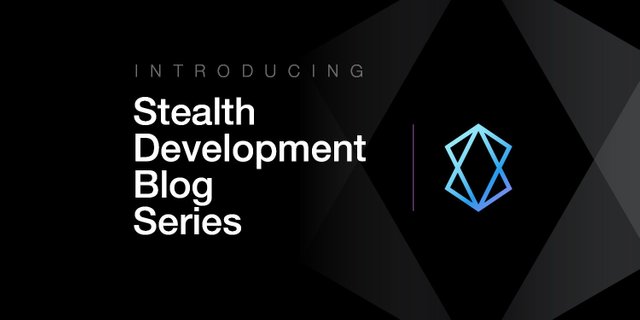Stealth Development Blog Series - An Introduction
Intro to this Blog Series.
First of all, I consider an intro to be antithetical to this blog series because, as a rule, I won’t create post intros or conclusions for this series – unless I feel like it. But I’m going to do an introduction here just to kick off the series.

What is the Stealth Development Blog Series?
This series will be a running journal of development updates on qPoS. As I code, I make functionality and implementation decisions that may be new or additional to what I put into the white paper, which I published back in April. These decisions are always accompanied by a rationale, but seldom, if ever, by github commits. Anyone who has followed Stealth knows that I tend to do all my development and testing on a private repository, then make larger commits all at once. These larger commits generally accompany releases. Because of my preferred style of development, it is not easy for the community to follow daily development. Towards this end of keeping the community in the loop, we have decided to put my daily discussions of development with the team into weekly digests that will serve as the material for this series.
Direct Development of qPoS is Underway.
Although the qPoS Whitepaper was published in April 2018, I have not yet had a chance to begin direct development on the qPoS protocol. Lots of other Stealth development activity has stood in the way this year. During the earliest part of the year, the team spent considerable time establishing an infrastructure for development, including creating corporate entities through which we interact with third parties, like exchanges, meeting organizers, and vendors of all sorts. We want to approach XST development as an institutional endeavor, and that has meant creating an institutional infrastructure. We have done most of that work, but of course still have more to do. Fortunately, though, setting up this infrastructure is no longer the full thrust of our activities.
In late spring and summer we spent much time creating a promotional road map, acquiring marketing talent and building bridges with services like Blockfolio and Delta Direct, where we utilize their broadcasting platforms. We also approached exchanges, not simply to try to get listed, but to make inroads for future listings once qPoS is implemented and our privacy layer added. Stealth has been added Bitinka, Zapple, and CryptoWolf as part of these efforts. We believe we have done well to communicate our plans to a few larger exchanges, and now it is up to the team to deliver a working product, so that these listings make sense.
Late in the summer, we began preparing what we consider our launch for a stronger public presence when we went to the Consensus Singapore event. It was a great experience for the team, and we met with many PR services, market makers, exchanges, and other influential individuals in the southeast Asia region. Although Singapore was a two day event, our status as the sole Platinum Sponsor meant that our production was pretty big. As most may know, Stealth is an old-school community-driven coin with a fair launch and no ICO, meaning we have practically no funding for a big team of developers. As a result, Singapore required our small team to spend about 6-8 weeks of full time preparation and execution.
After Singapore, I wrapped up our most recent major release (v2.2.0.0), wherein I removed transaction timestamps and transaction ID malleability. The importance of this release is discussed elsewhere (https://medium.com/stealthsend/stealth-release-v2-2-0-0-3b0c3d06b857). Although removing transaction timestamps seems like a minor technical change, it actually required a significant re-working of the most core parts of Stealth's proof-of-stake protocol. In fact, we anticipate that other proof-of-stake coins will soon incorporate these changes into their protocols. Because XST is an open source project, we wholeheartedly support other coins that wish to implement our protocol changes.
Immediately after the v2.2.0.0 release, we began preparations for Consensus Invest on November 27. Our presence at this event was much smaller than Consensus Singapore, mostly because it was exceedingly difficult for our team to prepare for a major production so soon after Singapore and so soon after the v2.2.0.0 release. Still, we had a good presence and met with individuals from some great projects and service providers.
Those from the team who went to Consensus Invest came back this weekend, and this return marks what I consider the official beginning of our work on the core of the qPoS protocol. The v2.2.0.0 release was important preparation for qPoS work, but it does not represent work directly on the protocol.
In future posts, I will dump my thoughts as I develop code. I won’t spend a lot of time, if any, explaining terms and acronyms. I will simply explain my insights and development decisions. Hopefully everyone can follow along. Since the series is not intended to be pedagogical, I hope that readers can ask clarifying questions in the comment sections of the posts (on Steem and Medium), or ask directly in Telegram.
–––––
Hondo